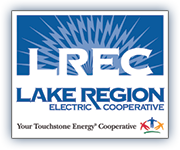Power Restoration
How do electric cooperatives prioritize repairs after a major storm? Whenever the electricity goes out, we’ve come to expect service will be restored within a few hours at most. But when a major ice storm or tornadoes cause widespread damage, longer outages cannot be helped. Line crews work long, hard hours restoring service, but it’s a task that needs to be done methodically to be done safely.
Here’s a refresher course on how electric cooperatives go about the task of restoring service after severe storms. Every co-op follows a basic principle when it comes to restoring power: priority goes to the lines that will get the most people back in service the quickest. This usually begins with main lines and continues out to tap lines and then to individual service lines.
Exceptions are made for people on life-supporting medical equipment. Notify your co-op immediately if someone in your family uses such equipment, and always have a backup generator ready.
Watch a short video on Power Restoration
- A big storm has just hit the countryside! What happens next?
-
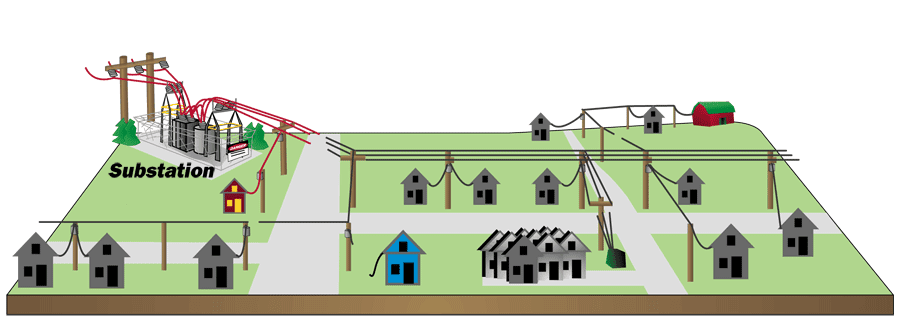
In this simplified diagram, most of the countryside is in the dark. Fortunately, the substation serving the area is energized. It’s receiving power from the transmission lines, shown in red. But a main distribution line from the substation to most of the area is damaged, leaving most of the consumers in this area without power.
- 1. All repairs start with the main line.
-
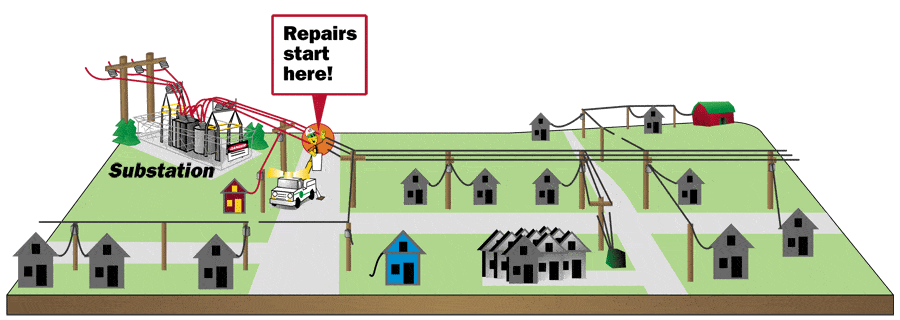
A large number of consumers down the line will have power returned once the main line is fixed.
With the main line now fixed (now shown in red), the electric cooperative line crew can better isolate other damage and prioritize repairs. - 2. Fix Lines into Subdivisions.
-
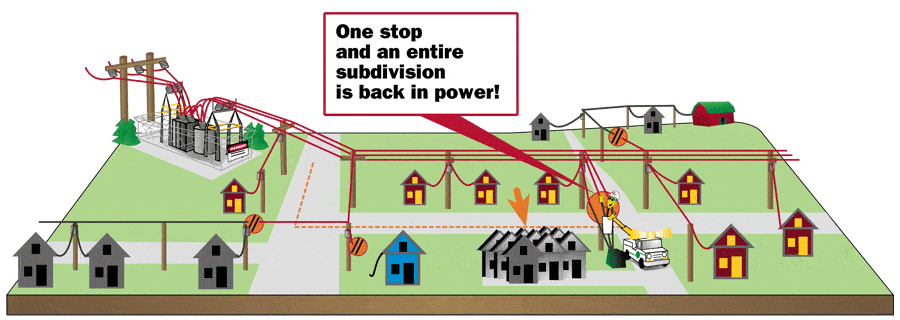
Though a couple of repairs were closer, fixing the line into this subdivision down the road will get many more consumers on faster.
- 3. Another Stretch of Line
-
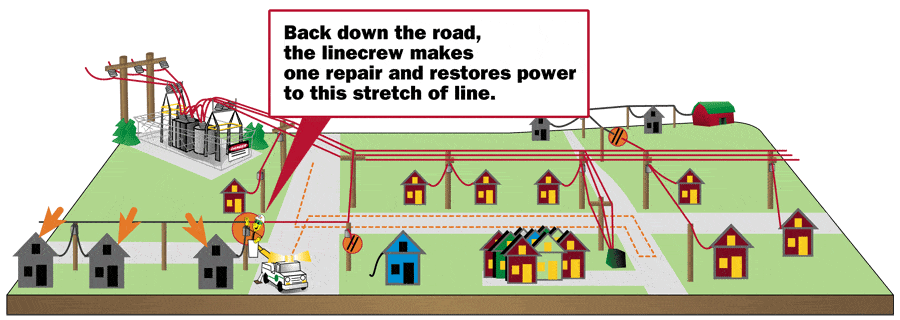
Moving back down the road, the crew stops by this intersection to fix a damaged tap line. This repair restores power to the homes (shown with orange arrows) along this stretch of line.
- 4. More Houses and Farms
-
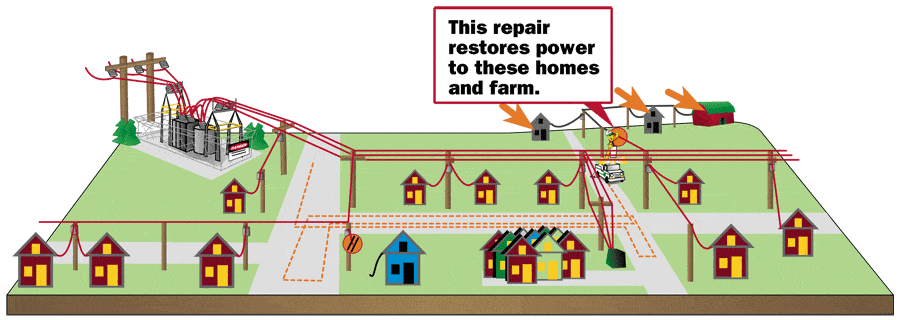
Though a couple of repairs were closer, fixing the line into this subdivision down the road will get many more consumers on faster.
- 5. Individual Repairs Begin
-

By now, the folks in the blue house probably are wondering “what gives?” They see lights in the homes of their neighbors; they’ve seen electric cooperative crews going by their home and working right across the road. And still they have no power!
- Finally, all power is restored to the area.
-
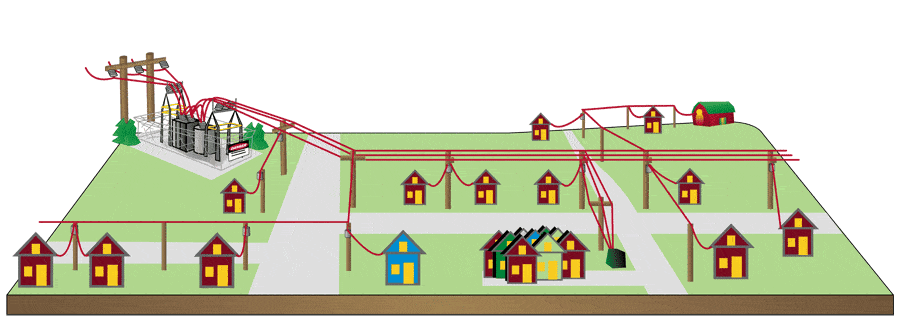
Please note: The cooperative line crew may need to come out in the following days and weeks to make long-term repairs and rebuild sections of line that were severely damaged by the storm. This might mean you will find blinking clocks when you get home from work or be notified of planned short-term power outages.
Tree-trimming crews may be in your area to make sure rights-of-way are clear of overhanging tree branches. Wind and ice storms can topple trees into power lines which account for many of the outages in wooded areas. When you see the orange diamond-shaped “Utility Work Ahead” or similar warning signs along the road, be sure to slow down and give the line crews plenty of room. They might just be working on the power line that powers your home. If you ever have questions about outages and repairs, be sure to call your our office.

